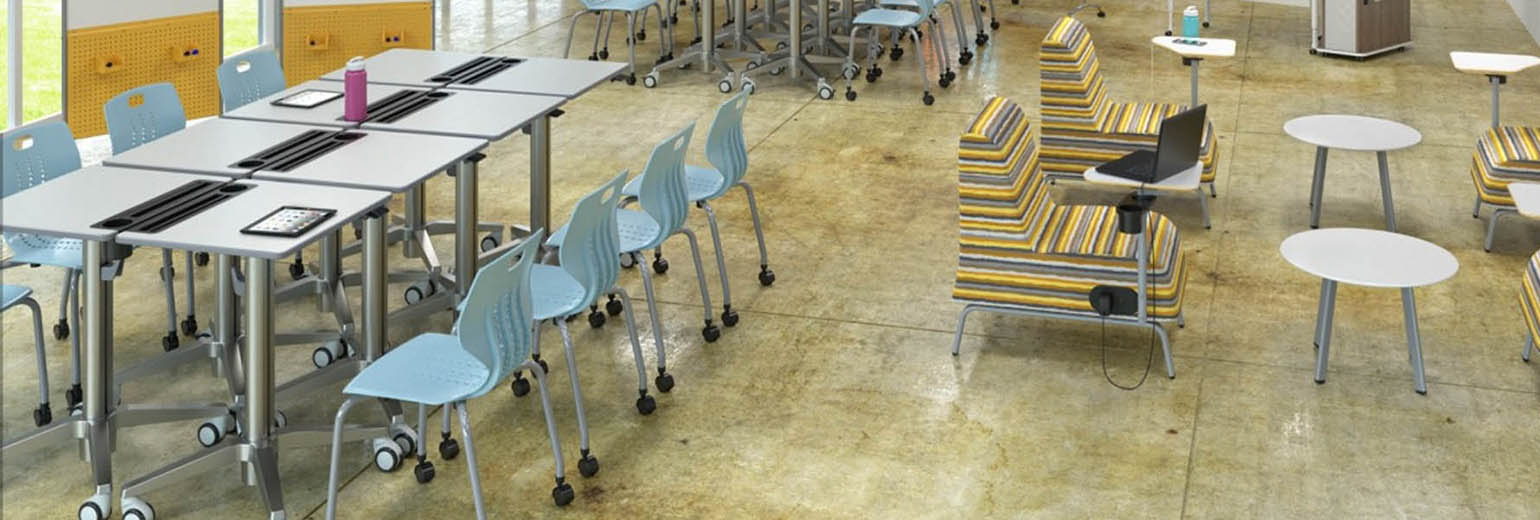Active learning is an instructional approach in which students take a hands-on, fully engaged role in their education, rather than sitting passively and absorbing information. Research shows that active learning is more effective than traditional lecturing, and it helps build critical 21st-century skills.
When students are actively engaged in their learning, they are thinking, creating, sharing, communicating, and constructing new knowledge. They are also taking ownership of their education. For these reasons, active learning is replacing the old-school “sit and get” approach to instruction in many classrooms nationwide.
Active learning can take many forms; here are some common examples.
Student inquiry
Michael Gorman, who oversees digital learning and professional development programs for Southwest Allen County Schools near Fort Wayne, Indiana, has written a blog post to help educators promote student-led inquiry by giving students a driving or investigative question to answer.
For example: If you were a NASA scientist, and you had to write a proposal recommending which planet should be explored by the next space probe, which planet would you choose—and why?
High-quality questions should “engage the students and create wonderment through relevance to their world,” Gorman writes. These questions should require students to do research from multiple sources, think about their findings, and then synthesize the results into a clear and cohesive argument or plan. “If the question is Google-able,” he notes, “then it probably is not deep inquiry.”
Discussion and debate
Class discussions and debates “can be an excellent strategy for enhancing student motivation, fostering intellectual agility, and encouraging democratic habits,” says Carnegie Mellon University’s Eberly Center for Teaching Excellence and Educational Innovation. “They create opportunities for students to practice and sharpen a number of skills, including the ability to articulate and defend positions, consider different points of view, and enlist and evaluate evidence.”
While discussions and debates can be valuable active learning strategies, leading them in the classroom can be anxiety-producing. “Discussions are, by their nature, unpredictable, and (they) require us as instructors to surrender a certain degree of control over the flow of information,” the center says.
Careful planning can help ensure that discussions are “lively without being chaotic and exploratory without losing focus”—and the center’s website provides advice for how to plan and lead them effectively.
Creating and composing
Having students create original works that demonstrate or enhance their understanding of a topic—such as public service announcements, movie trailers, rap songs, picture books, blog posts, photo journals, advertisements, business plans, 3D models, or other artifacts—has its roots in constructivist theories of education, which say that learners construct their own understanding of the world by experiencing things and reflecting on those experiences (in other words, “learning by doing”).
Letting students get creative also allows them to become “protagonists of their own learning,” says Mindy Faber, co-director of the Convergence Academies program in the Chicago Public Schools. Students are more highly engaged and motivated when they are given creative license, and they learn how to become innovators and creative problem-solvers as well.
With support from a federal grant, the Convergence Academies program created digital “ateliers,” or workshops, in two Chicago schools. During the school day, students use these spaces to create or compose digital artifacts for class-related projects; after school, students are free to hang out and learn digital media skills under the guidance of digital media mentors.
Since the program began in 2013, both schools have seen achievement rise—and students are learning important technology skills that can put them on a successful career path.
Collaboration
Having students work together in small groups to solve problems and share information not only leads to deeper learning and understanding; it also builds the essential teamwork skills that employers covet.
The College Preparatory School, a private coeducational high school in Oakland, California, weaves collaborative learning into the fabric of its approach, reports Edutopia. Teachers encourage classroom collaboration by assigning students to groups to review their homework, do daily class assignments, participate in moderated discussions, and complete hands-on projects. Often, teachers give students group tests, which are designed to be harder than individual assignments.
“Students quickly realize that they are able to solve problems as a group that they would not be able to solve as individuals,” Edutopia notes.
Project-based learning
Project-based learning combines student inquiry, creation, and collaboration by challenging students to solve a real-world problem or complete an authentic learning task.
For instance, in Loudoun County, Virginia, kindergarten students designed the puzzles that are being used to stimulate the minds of orangutans in a Texas zoo—while high school students researched the environmental damage caused by de-icing agents that are applied after snow and ice storms, then launched a public service campaign that changed behaviors statewide.
These efforts are part of Loudoun County’s “One to the World” initiative, writes education consultant Alan November—which is leading to deeper learning and greater student engagement by empowering students to make meaningful contributions to the world. The school division is working with the Buck Institute for Education to help educators develop authentic problems for their students to solve.
“What I hear time and time again from teachers is they’re amazed at how hard students are working to bring their A game,” says Superintendent Eric Williams. “The amount of time they spend on projects is far beyond what is necessary.”
For active learning to be successful, though, a number of important elements must be in place. For instance, teachers need to be taught proven strategies for leading active learning in their classrooms. They need support structures to help them implement these strategies effectively, while overcoming their fears of trying something new in front of their students. And they need the right kind of classroom environment to support and encourage active learning—which includes the design of the learning space and how the furniture is configured.
For more information about how to foster successful active learning, contact Arizona Furnishings today at 800.872.2287.
– Cindy Eggebrecht


